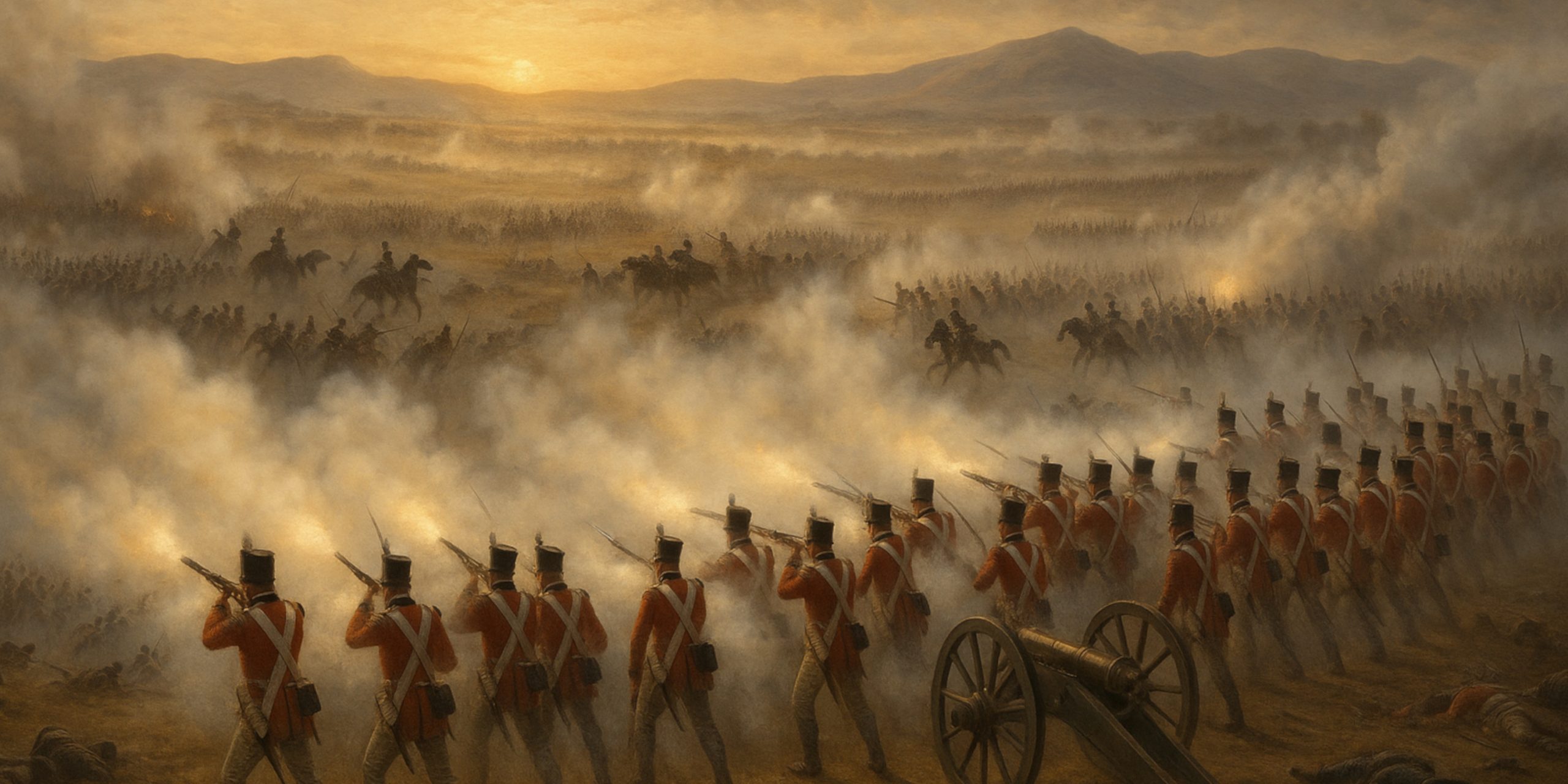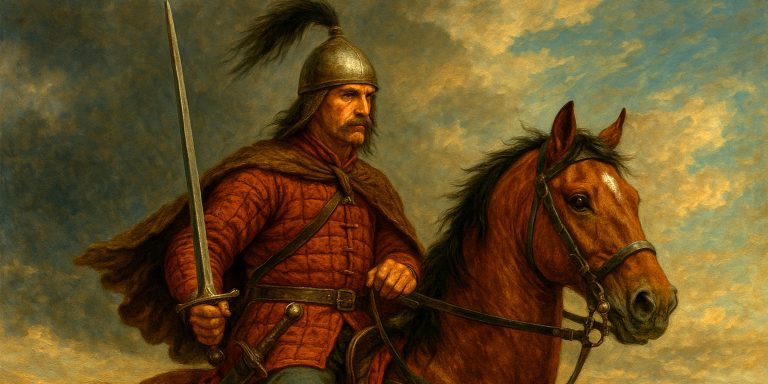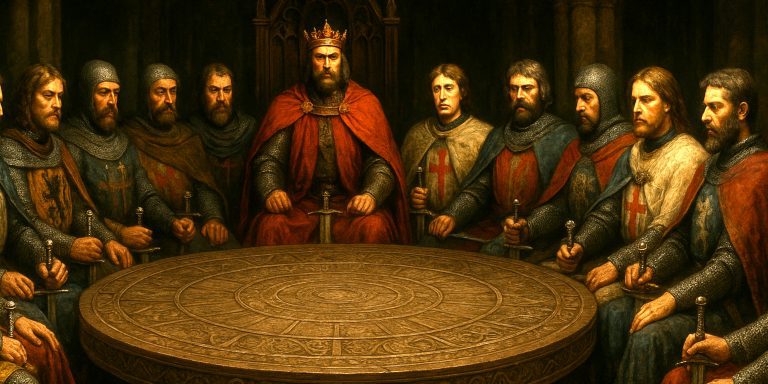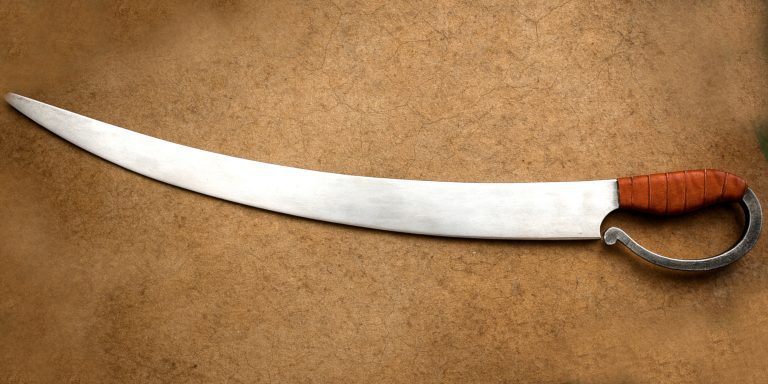
The Battle of Talavera, fought on 27–28 July 1809, was one of the defining clashes of the Peninsular War. It saw the combined British and Spanish forces under Sir Arthur Wellesley (later the Duke of Wellington) face the might of Napoleon’s Imperial army under Marshals Victor and Jourdan. It was a chaotic, brutal, and sun-scorched engagement that left both sides bloodied, but established Wellesley as a commander to be taken seriously.
The battle unfolded on the dusty plains near the River Tagus in western Spain, close to the town of Talavera de la Reina. Though technically a tactical victory for the British and Spanish, it came at a heavy cost and exposed the fragility of coalition warfare in the Peninsula.
Background
By mid-1809, Britain’s involvement in Spain was gathering pace. Wellesley had recently returned to command after the short-lived Corunna campaign and was determined to confront the French head-on. The Spanish army, commanded by General Cuesta, was less disciplined but brought vital manpower.
Napoleon himself was occupied elsewhere in Europe, leaving his marshals to suppress the Iberian resistance. The French believed Wellesley’s expeditionary force could be swept aside. They underestimated him.
Forces
| Side | Commander | Strength | Notes |
|---|---|---|---|
| Anglo-Spanish Army | Sir Arthur Wellesley & General Gregorio de Cuesta | ~53,000 men (including 20,000 British) | Supported by limited artillery, but lacking coordination between allies |
| French Army of the Tagus | Marshal Claude Victor, with Marshal Jourdan as advisor | ~46,000 men | Veteran troops, well supplied, with powerful cavalry and artillery arm |
Leaders and Troop Composition
Anglo-Spanish Army:
- British Commanders: Sir Arthur Wellesley, Sir Rowland Hill, Sir Stapleton Cotton (cavalry)
- Spanish Commanders: General Cuesta, General Albuquerque
- Troop Breakdown:
- Infantry: Line regiments including the 29th, 48th, 83rd, and 97th Foot
- Cavalry: 14th Light Dragoons, 23rd Light Dragoons
- Artillery: Approximately 30 guns (British and Spanish combined)
French Army:
- Commanders: Marshal Victor, with divisions led by Ruffin, Lapisse, and Villatte
- Troop Breakdown:
- Infantry: Line and light regiments, including elite voltigeurs and grenadiers
- Cavalry: Heavy cuirassiers and light hussars
- Artillery: Around 80 guns
Arms and Armour
The soldiers of Talavera carried the practical instruments of early 19th-century warfare, where bravery often outran technology.
British Weaponry:
- Infantry: Brown Bess flintlock musket, effective to about 100 yards if one was lucky and the powder dry.
- Rifles: Baker Rifle (used by the 95th Rifles), offering greater accuracy.
- Swords:
- Infantry officers: 1796 Infantry Officer’s Sword (light curved blade)
- Cavalry: 1796 Light Cavalry Sabre and the heavier 1796 Heavy Cavalry Sword, both notoriously brutal in close combat
French Weaponry:
- Infantry: Charleville musket, similar in range but better made than the British Brown Bess.
- Cavalry:
- Cuirassiers: Equipped with straight-bladed heavy swords (AN XI sabre)
- Hussars and Chasseurs: Curved sabres for slashing attacks
- Armour: Cuirassiers wore breastplates and helmets, giving them a psychological and physical edge in melee
Spanish Forces: A mixture of older muskets and local sabres, some dating back to the Bourbon era. Their artillery, though brave, was outdated and poorly supplied.
Battle Timeline
| Date | Event |
|---|---|
| 25 July 1809 | Wellesley and Cuesta join forces near Talavera, despite mutual distrust. |
| 26 July | French reconnaissance engages the Spanish lines. Skirmishes flare as the heat reaches unbearable levels. |
| 27 July | Marshal Victor launches a night attack on the British left under Hill. Fierce hand-to-hand combat ensues in the dark. The British hold their ground. |
| 28 July | At dawn, the French renew their assault in full force. The 29th and 48th Foot stand firm on the Cerro de Medellín ridge, repelling repeated French charges. |
| Midday | The French artillery pummels the British lines. The 23rd Light Dragoons make a disastrous charge through rough terrain, suffering heavy losses. |
| Afternoon | Victor’s final attack fails. The French retreat in good order but leave thousands dead or wounded. |
| 29 July | Wellesley withdraws due to lack of supplies and the threat of a new French force under Soult approaching from the north. The British begin their long march back to Portugal. |
Archaeology and Battlefield Today
Modern surveys near Talavera de la Reina have located remnants of musket balls, uniform buttons, and artillery fragments consistent with early 19th-century ordnance. The terrain remains relatively unchanged, and the Cerro de Medellín ridge still offers the commanding view it did in 1809.
There are no grand monuments here, just quiet fields and the occasional memorial stone marking where the British line held against overwhelming odds. For those with a metal detector and patience, the occasional musket ball still turns up in the parched soil.
Contemporary Quotes
Sir Arthur Wellesley later remarked dryly:
“The Spaniards did nothing but run away, yet the victory was ours.”
A French officer, in a letter home, wrote:
“The English stood like walls. We advanced again and again, and still they fired as if death itself had patience.”
A private in the 29th Foot recalled:
“The ground was hot with iron and blood. I never saw such smoke or heard such noise. When the French came on, it was like the devil’s own drum.”
Legacy
Talavera was Wellesley’s first major victory in Spain, earning him the title Viscount Wellington of Talavera. It proved that disciplined troops under sound leadership could withstand the formidable French columns.
However, it also exposed the chronic supply issues that plagued British operations in Spain. Thousands of wounded men were left behind due to lack of transport, and the Spanish allies were less than cooperative. Wellesley’s opinion of them never quite recovered.
Despite the chaos, Talavera was a crucial morale victory. It signalled Britain’s resolve to remain in the Peninsula and fight the French empire on its own soil.
The Seven Swords Takeaway
The Battle of Talavera was not a triumph of manoeuvre, but of endurance. Wellesley’s army stood firm under the sun and musket smoke, outlasting an experienced French force through discipline and sheer stubbornness.
It was, in short, a victory earned with sweat, grit, and musket balls rather than brilliance. As one historian put it, “Talavera was the day the British learnt how to fight the French, and the French learnt that they could not easily win.”
Watcht the documentary:



